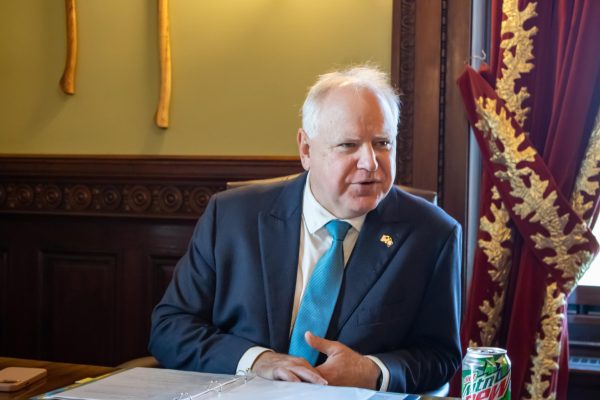While the gap between Caucasian and ethnic minority donors in the nation’s only bone marrow registry has narrowed slightly in recent years, the difference is still significant.
About 71 percent of registered donors in the Be the Match registry are of Caucasian descent, while all other ethnicities make up the rest, according to a 2012 report. In 2009, 73 percent of donors in the registry were of Caucasian descent.
According to U.S. Census data, about 16 percent of the population is of Hispanic or Latino origin, yet they currently make up only 10 percent of the Be the Match database. There are similar gaps in the registry of 9.5 million donors for other groups, except the Asian population, which make up about 7 percent of the registry but about 5 percent of the American population overall.
Last week, Be the Match set up tables outside of cultural events on the University of Minnesota campus to promote ethnic diversity among bone marrow donors.
The drive outside of the Asian-American Student Union’s spring conference allowed them to reach people with many different ethnic backgrounds in one central location. Targeting donors on college campuses is also essential to the bone marrow donor program.
“Doctors of transplant patients prefer donors between the ages of 18 and 44, even more so 18 to 24,” said Kristine Reed, an account executive for the program.
When matching bone marrow, it is vital to find donors with similar human leukocyte antigen markers, Reed said. HLA markers are arranged on tissue cells differently as well as in different quantities within ethnic groupings.
The immune system works with these markers to determine which cells belong in the body. When HLA markers don’t match, the body will not recognize the markers and reject them. The rejection could possibly kill a person, Reed said.
With a lack of diversity within the registry, patients of ethnic minority have a lower chance of finding a match.
Reed, a leukemia survivor, was in need of a bone marrow transplant in 1999.
“Luckily, my only sibling was a perfect match for me,” she said.
Not all patients are so lucky.
There are many factors for low participation among minorities. Reed said it may be a result of registration fees many years ago.
“At one point our organization did require people to pay to get on to the registry, so that’s where a lot of socioeconomic factors came into play, unfortunately,” she said.
The registry no longer has the fee requirement, but the lack of ethnic minority donors is still prevalent.
Without a current patient of ethnic minority to serve as an example for donations, Be the Match struggles to find those who are willing to donate. Reed has to encourage volunteers to “react proactively rather than reactively.”
Be the Match attempts to bridge the gap by making ethnic minority recruitment their No. 1 priority.
Overall, the program conducts drives and talks to spread the word. The program focuses on many ethnic minority groups around the nation.
Be the Match’s volunteer ambassador and material science junior, Sruti Velamakanni, is highly involved with trying to find donors through the Hindu Temple of Minnesota in Maple Grove, Minn.
Velamakanni said she relates to the people at the temple because of her Indian heritage.
“It’s easier for me to connect with the South Asian community over anyone else,” she said.
Velamakanni also said that many people think that donating bone marrow is a difficult and painful process.
But the process is similar to donating platelets. It usually takes about four hours and is not painful, she said.
“If they could just take the time to understand that a few minutes of their time could save a life in the future,” she said, “I think that would change things so much.”







